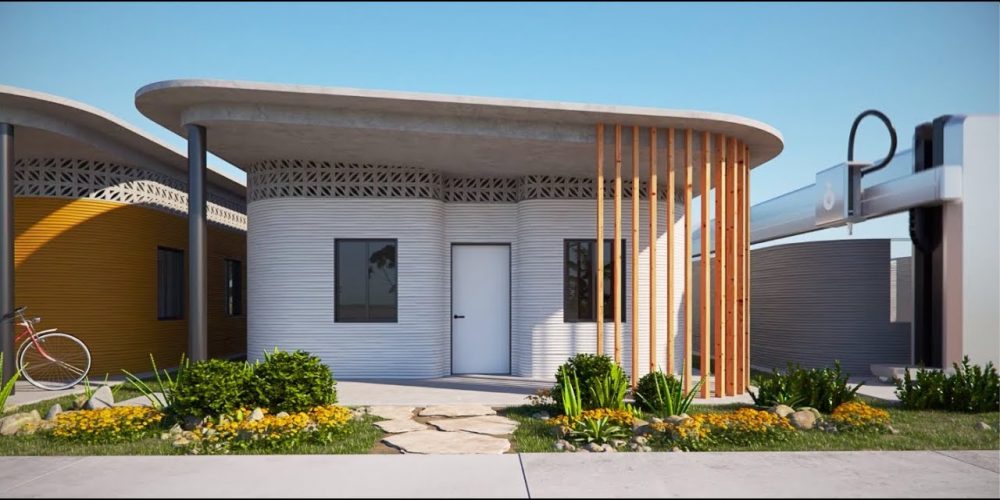A collaboration between designer Yves Béhar of fuseproject, Austin–based construction technologies company ICON, and shelter nonprofit New Story has resulted in a unique new innovation—3D printed villages. Dwell reports that the first community of this kind will provide beautiful, sustainable, and technologically-advanced homes for 50 impoverished families in Latin America.
The three collaborators create a trifecta that not only aims to remedy global homelessness, but to do so without cutting corners regarding design or technology. These homes can in no way be described as shoddy. Icon’s 3D-printed home is informed with fuseproject’s community-specific research, making a perfect design to satisfy New Story’s mission to “end global homelessness with sustainable, cutting-edge technology.”
“As we spoke to the community members, we realized that a single house design doesn’t respond to the needs and expectations,” Béhar explained, referring to their team’s work and research regarding the design factors that would affect the community like land selection to community layout. “This led us to design a system that allows for different programs, climate factors, and growth for families and spaces.”
The team has yet to unveil the specific location, but New Story claims the homes will serve mostly farmers and palm weavers of different ages who live off less than $200 a month in a semi-rural Latin American community. Each house will feature an outdoor kitchen, a large outdoor area for chickens and crops, an open-concept interior that optimizes ventilation, and unique countertops, seating, and shelving. The construction process creates almost no waste.
Icon’s device uses local concrete to build durable and scalable homes in areas that lack access to construction essentials like water, power, and labor infrastructure. They printed a prototype in Austin last year, but this Latin American community will be equipped with an updated version built for the tropical environment.
“We feel it’s our responsibility to challenge traditional methods,” says New Story CEO Brett Hagler. “Linear methods will never reach the billion-plus people who need safe homes. Challenging our assumptions, iterating based on data, and taking calculated risks on innovative ideas will allow us to reach more families with the best possible solutions, exponentially faster.”
If you enjoyed this article and want to receive more valuable industry content like this, click here to sign up for our digital newsletters!










Leave a Reply